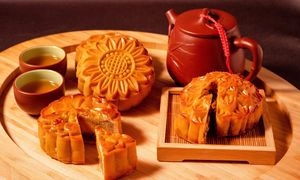
English vocabulary and phrases on Mid-Autumn Festival
mug means . Learn how to pronounce and use mug through vivid examples and easy-to-understand exercises.

Okay, let's break down how to pronounce "mug" in English. There are a couple of common pronunciations, and it depends slightly on where you are and what dialect you're hearing. Here's a breakdown:
Pronunciation: /mʌɡ/
Breakdown:
Emphasis: The emphasis is lightly on the "uh" sound.
Resources to Help You Hear It:
Tips for Getting It Right:
To help me tailor the explanation even further, could you tell me:
Let's break down how to use the word "mug" in English. It has a few different meanings and uses! Here's a breakdown:
Here's a table summarizing the different uses:
| Meaning | Definition | Example |
|---|---|---|
| Ceramic Container | A cylindrical drinking vessel | "I need a mug of coffee." |
| Large Cup | A large cup (informal) | "Can I have a mug of water?" |
| Slang (UK) | A foolish/naive person | "Don't be a mug!" |
| Quantity | A large amount of something (figurative) | "He drank a mug of beer." |
Resources for Further Learning:
To help me give you even more targeted advice, could you tell me:
Which of the following items is commonly used for drinking hot coffee or tea at an office desk? A) tumbler B) mug C) beaker D) thermos E) cup
A pedestrian was ______ late last night near the park, losing their wallet and phone. A) assaulted B) greeted C) observed D) robbed E) mugged
Which characteristics typically describe a standard coffee mug? A) Has a handle B) Made of thin glass C) Designed for larger volumes of liquid than a teacup D) Often ceramic or stoneware E) Primarily used for cold beverages
Which of the following containers is typically designed for storing and pouring liquids, often featuring a handle and a spout? A) goblet B) pitcher C) vase D) decanter E) kettle
To illegally obtain money or property from someone by force or threats is to: A) extort B) pilfer C) embezzle D) burgle E) abscond

English vocabulary and phrases on Mid-Autumn Festival

Tips to improve vocabulary in communication

English vocabulary by topic: Clothes

The secret to remembering all 50 English vocabulary words every day easily

English vocabulary by topic: Human body

Vocabulary of the most popular subjects in English

Learn English about Covid: All about vocabulary and disease prevention

Vocabulary of Subjects in English

Set of 60 English vocabulary on educational topics

Vocabulary - just a small thing!
Comment ()